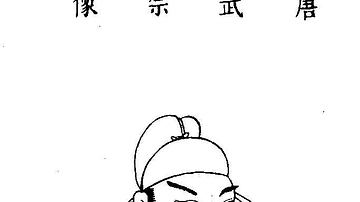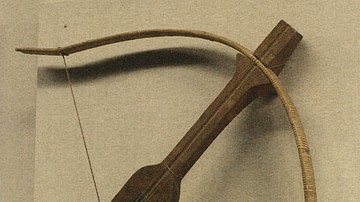Search
Did you mean: Oshun?
Search Results

Article
Dogen's One Bright Pearl & the Neo-Confucian Pattern
The concept of Oneness is expressed repeatedly in philosophical works both in the east and west. Whether one is reading the Paradoxes of Zeno of Elea (l. c. 465 BCE) or the treatises of Wonyho (l. 617-686 CE) the concept of the One is impossible...

Definition
Ennin
Ennin (c. 793-864 CE, posthumous title: Jikaku Daishi) was a Japanese Buddhist monk of the Tendai sect who studied Buddhism at length in China and brought back knowledge of esoteric rituals, sutras, and relics. On his return, he published...

Article
Mongol Multiculturalism
The Mongol Empire accepted and promoted many other cultures. Historians often talk about cultural exchange across Asia in the Mongol Empire as something that was just facilitated by peace and stability across such a huge area – the 'Pax Mongolica'...

Image
Khan Tengri
The mountain Khan Tengri, located in the Tian Shan mountain range on the China—Kyrgyzstan—Kazakhstan border. Height: 6,995 m (22,949 ft). It is likely named after the ancient Mongol sky god and supreme deity Tengri.

Definition
Oshun
Oshun (pronounced O-shan, also given as Osun) is a supernatural entity recognized as both a spirit and a goddess in the Yoruba religion of West Africa. She presides over fertility, love, and freshwater, is the patroness of the Osun River...

Definition
Longshan Culture
The Longshan culture (aka Lung-shan) flourished in parts of late Neolithic northeast China during the third millennium BCE and was an important link in the development of Chinese civilisation from the independent neolithic communities to...

Definition
Emperor Wuzong of Tang
Wuzong of Tang (also Wu-Tsung, formerly Li Yan) reigned as emperor of China from 840 to 846 CE. He is best remembered today for his persecution of Buddhists, the worst such attack in all of China's history, and his early death by insanity...

Article
Crossbows in Ancient Chinese Warfare
The crossbow was introduced into Chinese warfare during the Warring States period (481-221 BCE). Developing over the centuries into a more powerful and accurate weapon, the crossbow also came in versions light enough to be fired with one...

Article
Former Slave Narratives from Canada - "I thought it best to come to Canada and live as I pleased."
Enslaved Blacks in the United States, seeking freedom, often fled to Canada, especially after the Fugitive Slave Act of 1850 compelled citizens in free states to help slave-catchers apprehend them. Although they frequently faced racial prejudice...

Article
Scythian Territorial Expanse
With 7600 perimeter miles (12,231 km), the Scythians roamed and ruled over an astonishing 1.5 million mi² (2.4 million km²) of territory between the 7th and 3rd centuries BCE. Although building an empire was never in their interest, Scythian...